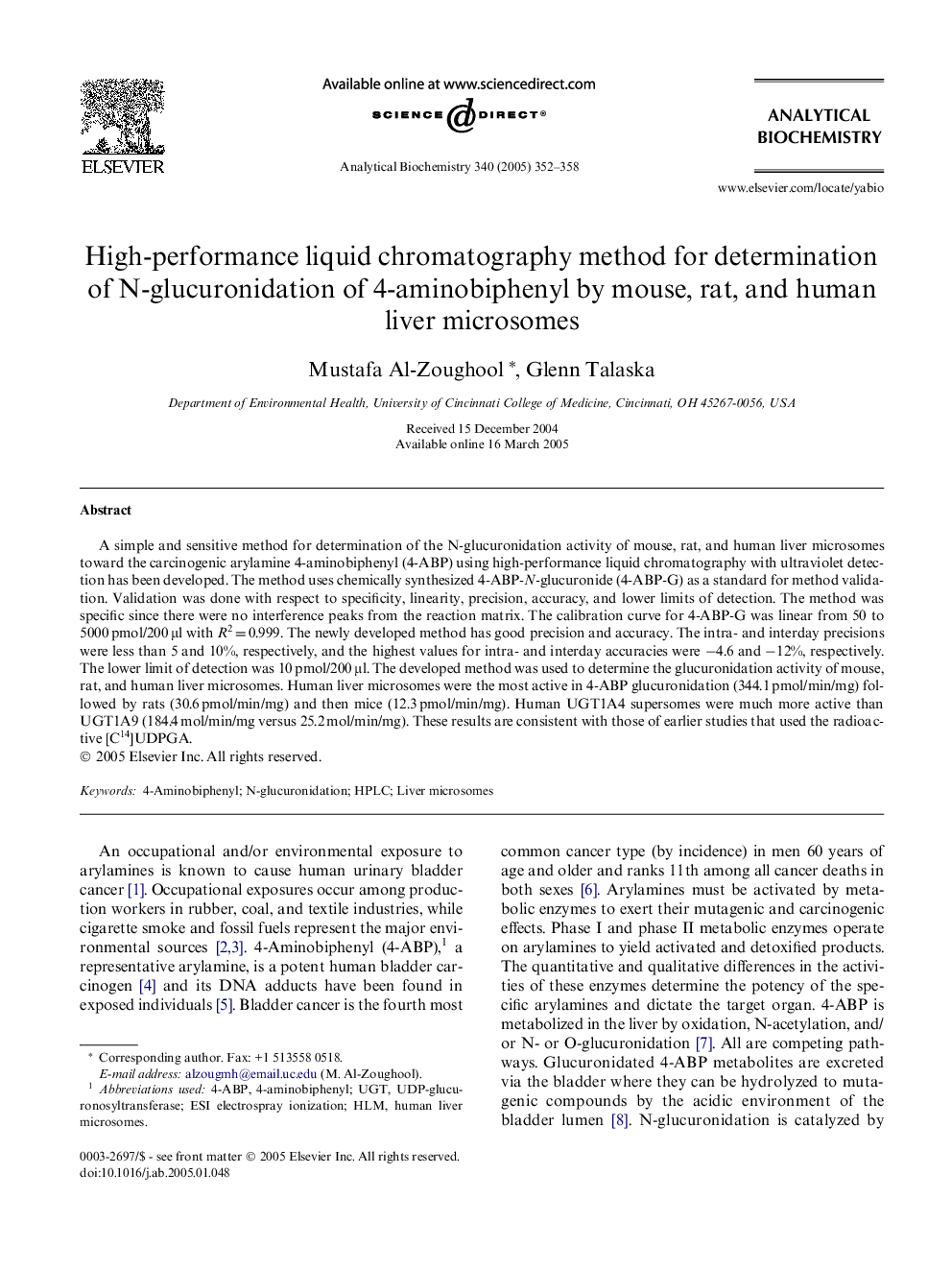| Article ID | Journal | Published Year | Pages | File Type |
|---|---|---|---|---|
| 9744935 | Analytical Biochemistry | 2005 | 7 Pages |
Abstract
A simple and sensitive method for determination of the N-glucuronidation activity of mouse, rat, and human liver microsomes toward the carcinogenic arylamine 4-aminobiphenyl (4-ABP) using high-performance liquid chromatography with ultraviolet detection has been developed. The method uses chemically synthesized 4-ABP-N-glucuronide (4-ABP-G) as a standard for method validation. Validation was done with respect to specificity, linearity, precision, accuracy, and lower limits of detection. The method was specific since there were no interference peaks from the reaction matrix. The calibration curve for 4-ABP-G was linear from 50 to 5000 pmol/200 μl with R2 = 0.999. The newly developed method has good precision and accuracy. The intra- and interday precisions were less than 5 and 10%, respectively, and the highest values for intra- and interday accuracies were â4.6 and â12%, respectively. The lower limit of detection was 10 pmol/200 μl. The developed method was used to determine the glucuronidation activity of mouse, rat, and human liver microsomes. Human liver microsomes were the most active in 4-ABP glucuronidation (344.1 pmol/min/mg) followed by rats (30.6 pmol/min/mg) and then mice (12.3 pmol/min/mg). Human UGT1A4 supersomes were much more active than UGT1A9 (184.4 mol/min/mg versus 25.2 mol/min/mg). These results are consistent with those of earlier studies that used the radioactive [C14]UDPGA.
Keywords
Related Topics
Physical Sciences and Engineering
Chemistry
Analytical Chemistry
Authors
Mustafa Al-Zoughool, Glenn Talaska,
